Rice: Part One - the Basics
The First Reader posted a funny on facebook: other people may be wine snobs, or scotch snobs, but my wife is a rice snob.
Well, I am. We'd been talking about a Thai restaurant we'd visited a while back, and why I wouldn't go back to it. We were served American medium-grain white rice, overcooked, with our meals. Eugh! See, I'm spoiled. I was raised by a pair of rice snobs. Dad tells a funny story about a tiny Asian shopkeeper, my Mom, and brown rice... let's just say she was picky about rice in an era when most American women only knew white rice, and didn't always know how to cook it.
During the adult part of my life, when I was running my own kitchen, I have worn out and replaced three rice cookers and am working on my fourth. The first one was a wedding gift from my mother. I use my current cooker frequently, and not just for rice, it's also a slow-cooker and steamer. I highly recommend a rice cooker for any kitchen, and will go so far as to say this is essential equipment. You won't need a crockpot if you have one, and the programmable ones allow precise cooking even when you'll be gone all day. Mine is a 12-cup Aroma brand, although when I replace it I'll go up a size to the 20-cup professional.
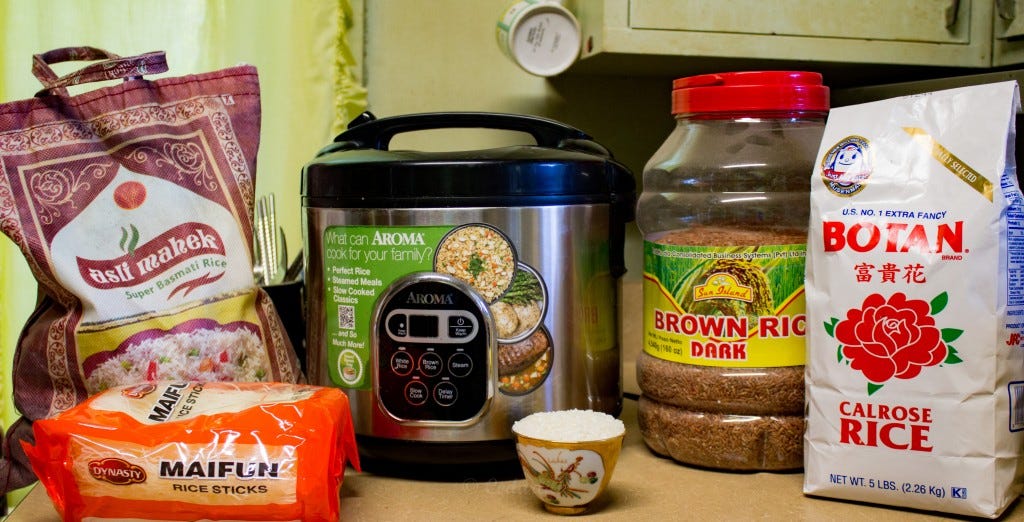
Rice and cooker: staples in my pantry and a tool I use almost daily.
Now that we have that out of the way. You can cook rice without a rice cooker, and in fact, two of the recipes I'm highlighting are prepared on the stovetop. If you haven't even got a stove, the First Reader tells me he used to microwave rice: one measure of rice to two measures of water, and twenty minutes in the microwave in an uncovered dish. He also informs me that what results isn't good rice. Rice is a staple, and like the other starch bases, it can be infinitely varied.
But first, cooking it right. This depends in part on the kind of rice you are cooking - more on that, later - and what dish you are making with it. However, in general you are not cooking the rice so much that individual grains are obliterated. There are a couple of dishes - risotto, rice pudding, and congee, for instance - where you are cooking it past that point. Rice should be done when it is no longer hard at the center, but still has a bit of 'tooth' to it, like pasta. Not mush. Even sticky rice, surrounded as it is in the gelatinous coating of its own starch, still has that bite in each grain. A rice cooker really is ideal for cooking just rice, and you can add flavorings when you start the rice, saving steps and immediately elevating the rice with little effort.
There are something like 40,000 types of rice in the world. If you follow this link, you'll find a site that explains in more depth what the common kitchen varieties are, and Chris Byrne has a good post that gets into the starch content of different types and how they affect cooking the rice.
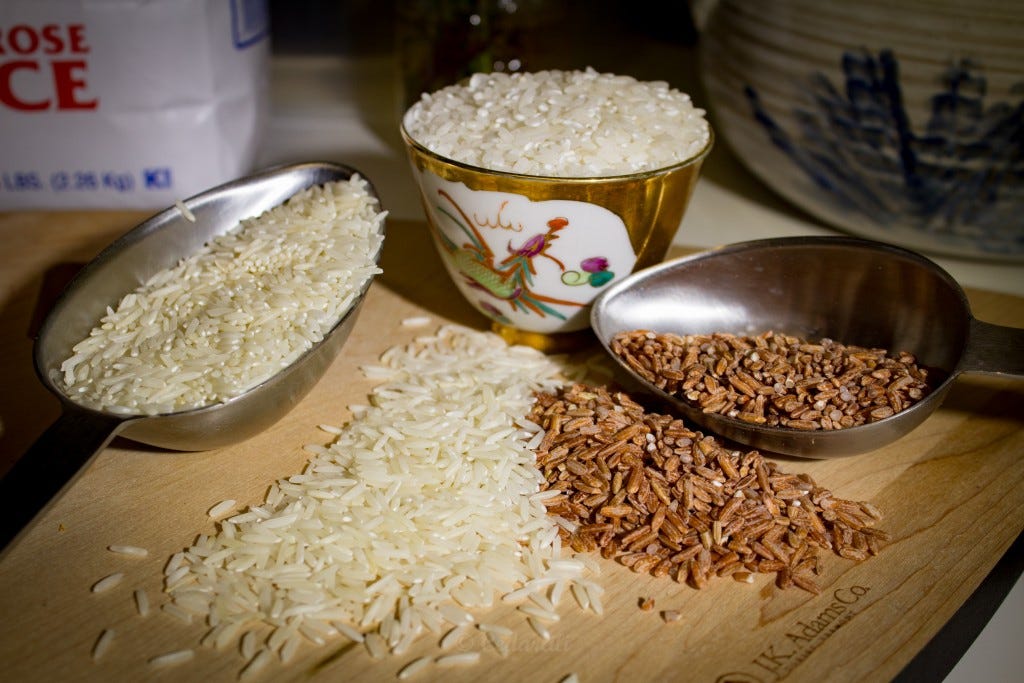
This is the bare basics of rice in my pantry.
The most common kind of rice you will find in stores is American White long-grain or medium grain rice. I don't usually buy this, to me it has no flavor and it's so commonly overcooked into mushy nothingness that turns people off from rice. Instead, my go-to staple for white rice (white rice has been milled to remove the bran and cook faster) is basmati, or jasmine, two similar long-grain rices that are fragrant even when uncooked. I use them to complement Asian-style dishes, to make Spanish Rice and Medjara Rice, and many other uses.
To cook, in general, any long-grain white rice, you will want about one cup of uncooked rice to one and a half cups of water.
Instead of water, you can cook it with broth, add spices to it, or use the methods described in the Spanish Rice recipe to pre-toast and add even more flavor to your finished dish.
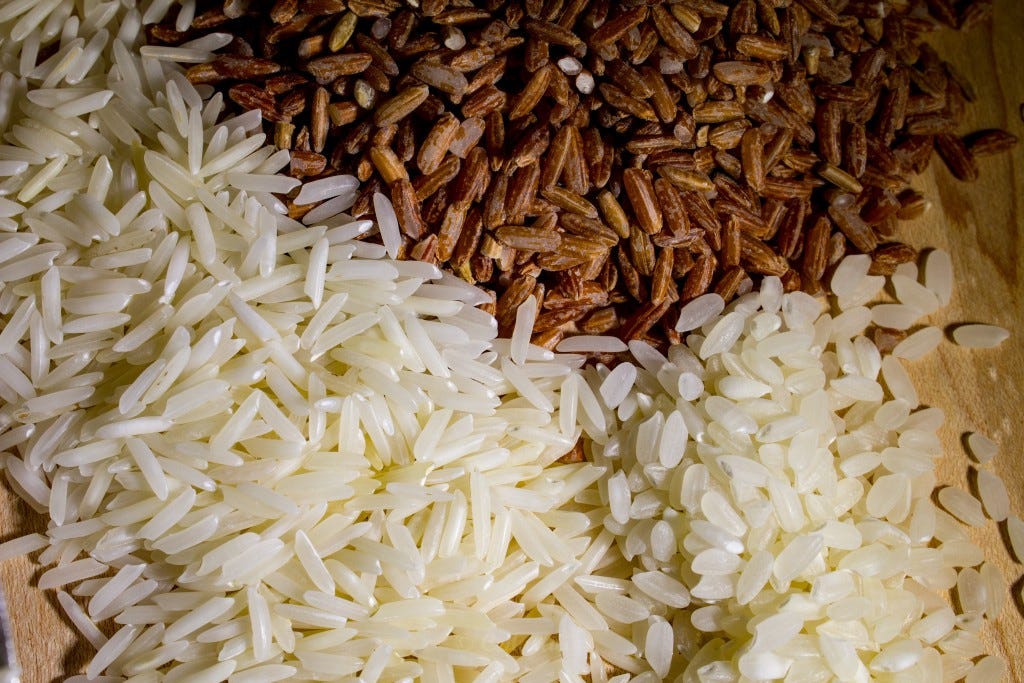
Basmati rice (long-grain white), long-grain brown rice, and short-grain white rice.
For brown rice, usually you won't find much in the way of options unless you are shopping a specialty store. I like brown basmati, although a sweet short-grain brown is also really nice. Brown rice is more nutritious as it still has the outer coating of bran, with the vitamins that are in the outer layer intact. It takes a bit longer to cook, uses more water when cooking, and doesn't 'fluff' the way white rice does. It is still my go-to for rice, though. In a soup or stew, it will hold up better without turning to starchy mush (otherwise known as glue) when reheated. It packs more flavor than white rice, and you can use it in most recipes just like white rice. I've been known to eat it with a dab of butter, a spoonful of molasses or sugar, and a bit of milk for breakfast (can't do the milk anymore but it's still good).
To cook most brown rices, you will want one cup uncooked rice to two cups of water.
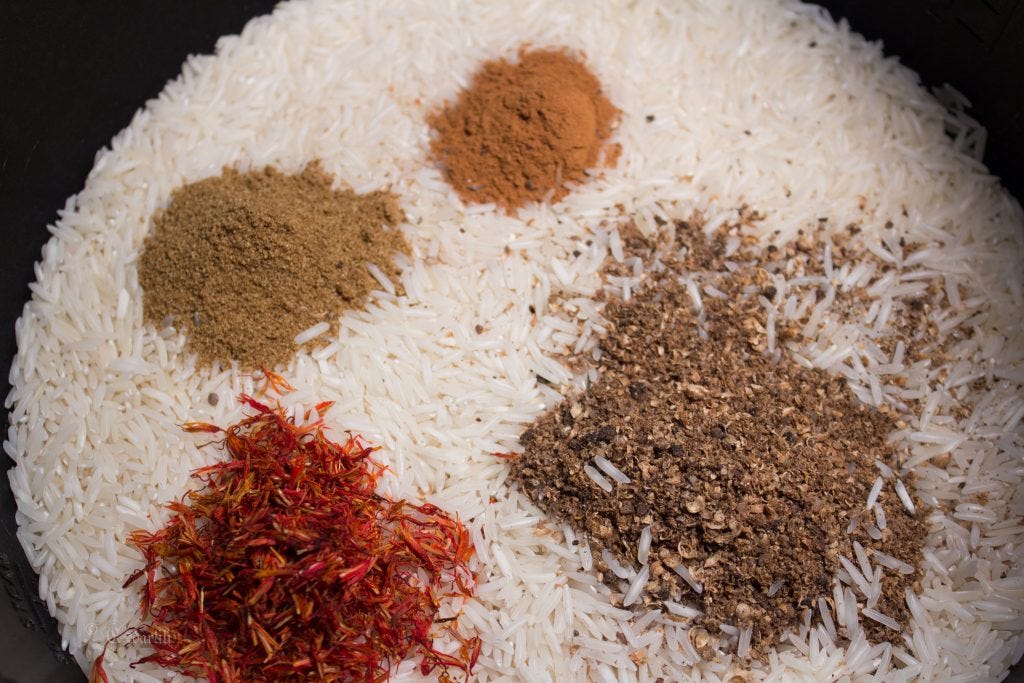
Various spices on the basmati rice, cooking them with the rice gives it so much flavor.
I keep three kinds of rice in my pantry at all times, and sometimes get specialty rices when I want them for a special meal - I'll cover those next week. The third kind is short-grain sticky rice. There are many varieties of this, I keep one kind, and use it in ways it's probably not intended, but it still makes a good dish. I use this for sushi, riceballs, risotto, and sometimes just because. When you make it into sushi rice, you will want to mix it while still hot with a little sugar (about 1-2 tsp) dissolved into rice wine vinegar (about 1-2 tbsp) for a batch that started with 1 cup uncooked rice. I could just make that into balls and make a meal out of it...
To make sticky rice, you will want three cups of water to one cup of uncooked rice. Rinse and drain the rice before cooking if it looks dusty (that's starch).
With short-grain white rice, you can make risotto, which is fantastic for lovers of flavor. This can be a side-dish, or with the addition of meat (sausage, chicken, shrimp....) a full meal.

Simple cheese risotto. Once you can do this, you can do anything.
Simple Cheese Risotto
Serves two for a meal, four for side-dishes. You can double this recipe.
1 cup shredded parmesan cheese (or romano, or asiago, or... any hard cheese with lots of salty flavor)
3-4 cloves garlic, finely chopped
1 large onion, finely chopped
1 tbsp Olive Oil
1tbsp butter
8 oz Arborio (any short-grain sticky will work) rice. I weigh, its much more accurate for this application.
4 cups chicken broth
1/2 c heavy cream (yes, half and half will work fine)
Chopped fresh herbs to garnish
Salt and pepper to taste
This is almost too much for a skillet, so in a heavy, wide sauce pan over medium low heat, saute the onions and garlic in the oil and butter until they are translucent.
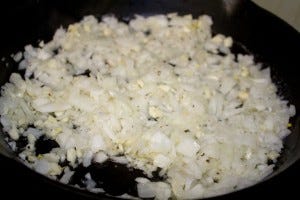
Add in the dry rice, stirring and frying for a couple of minutes. Add one cup of the broth, stirring, and continue to cook until the liquid is absorbed. Slowly pour in more broth. Repeat the process with another two cups.
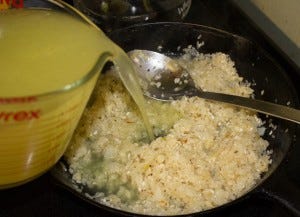
When you are down to the final cup of broth, taste the rice. It should be al dente, without a grain of hardness in the center when it is done. Add the last cup in dabs, tasting as you stir, to keep from overcooking. As soon as the rice is done, set aside what's left of the broth and mix in the cream, then the cheese. Cook until any excess liquid is gone. Taste. Season as needed.
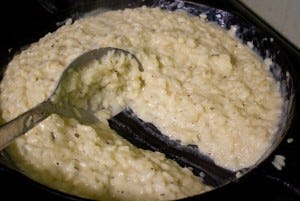
this is what it will look like when it's done.
Serve with a sprinkle of herbs on top.
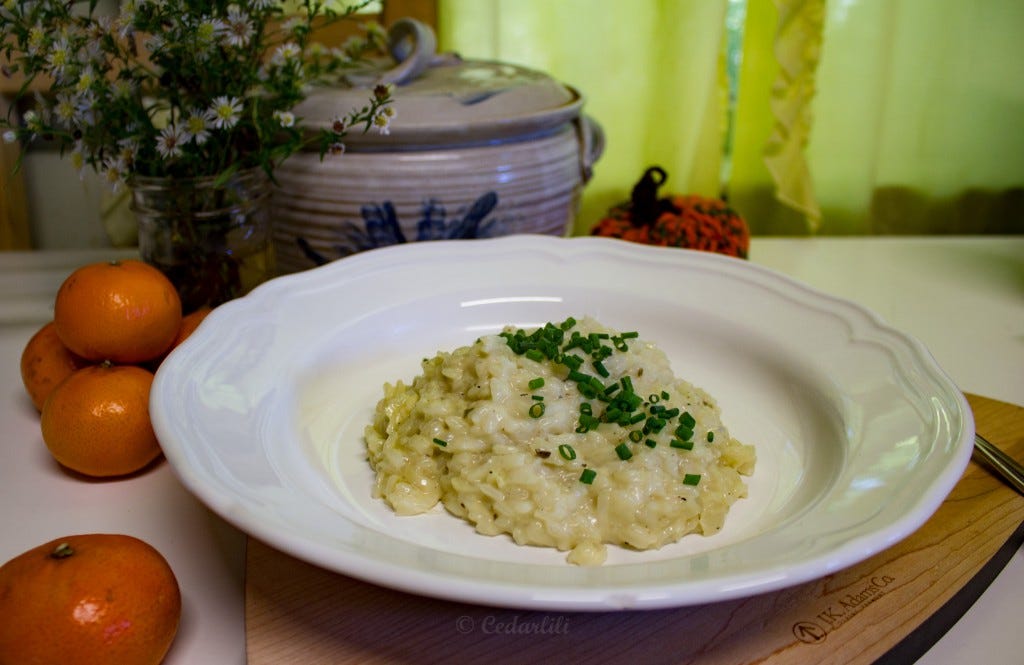
Risotto is creamy, rich, and has so much flavor.
Decadently delicious, and so easy to make. There are many, many variations on this dish, so have some fun with it once you're comfortable with the basics.
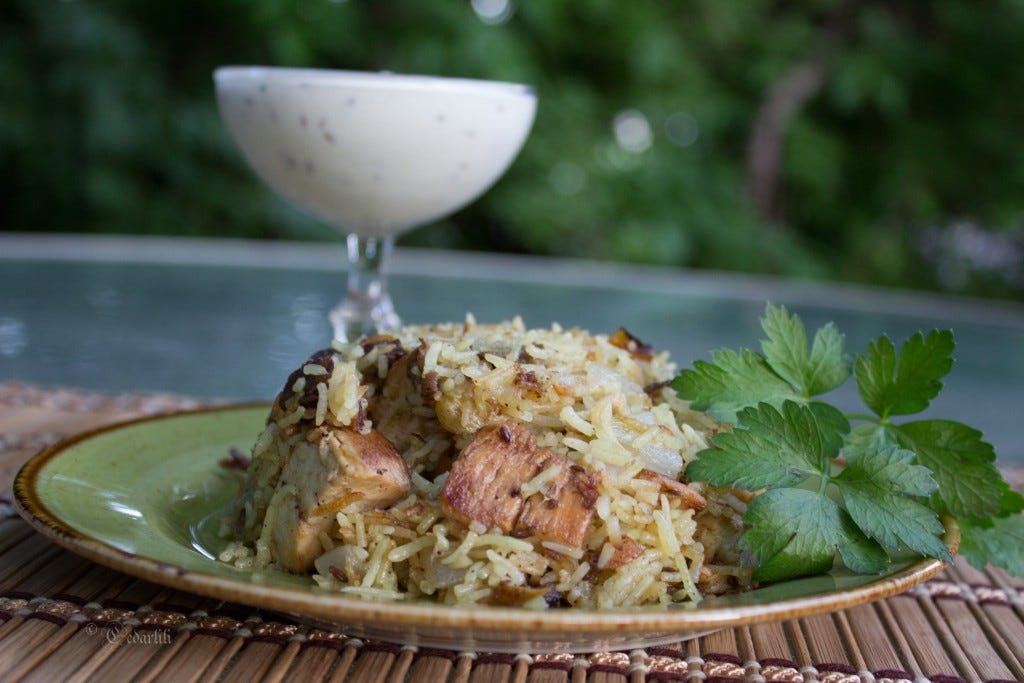
Leftover rice? Fried rice! This is a Middle-Eastern version using leftover Medjara Rice.




